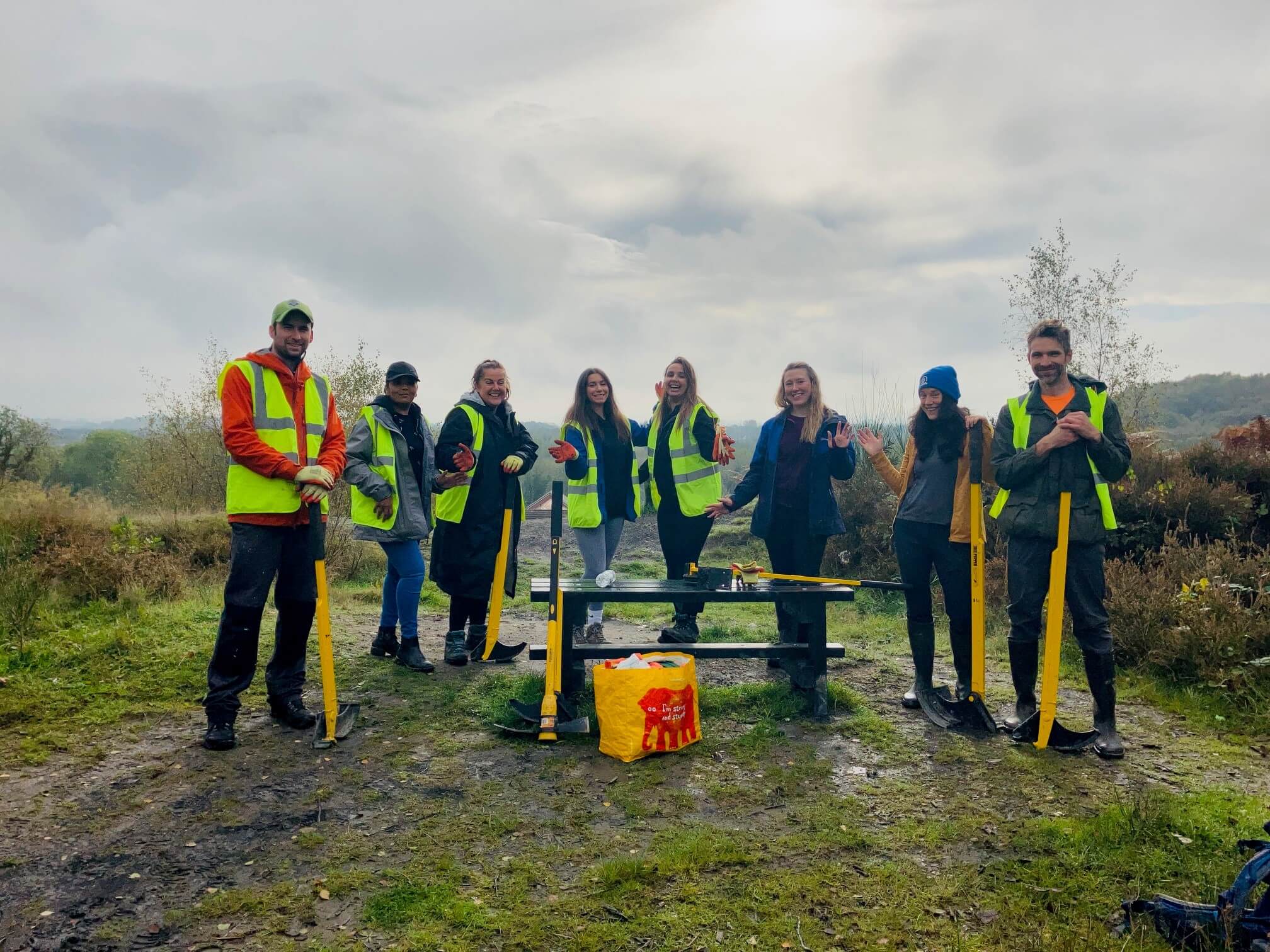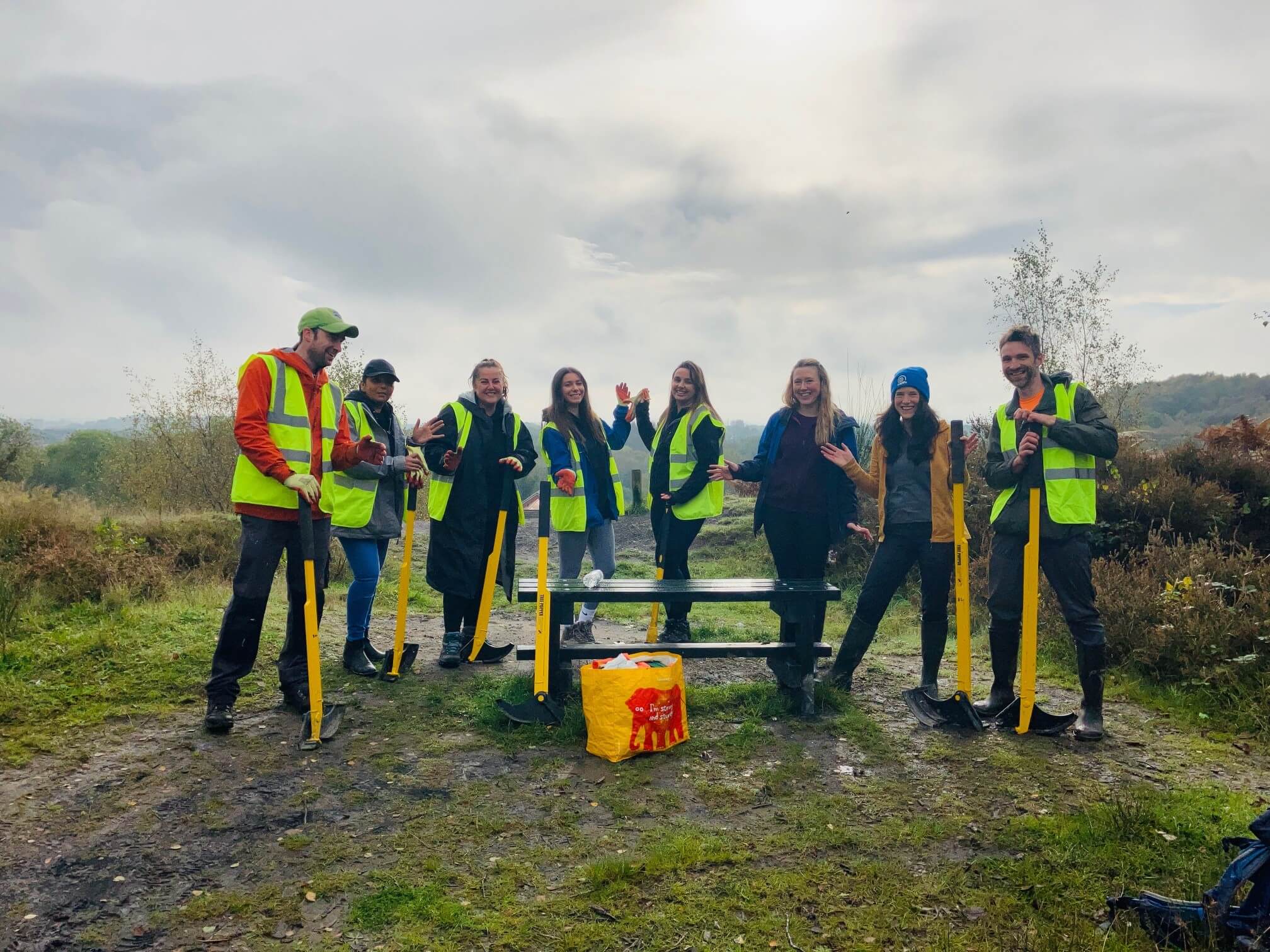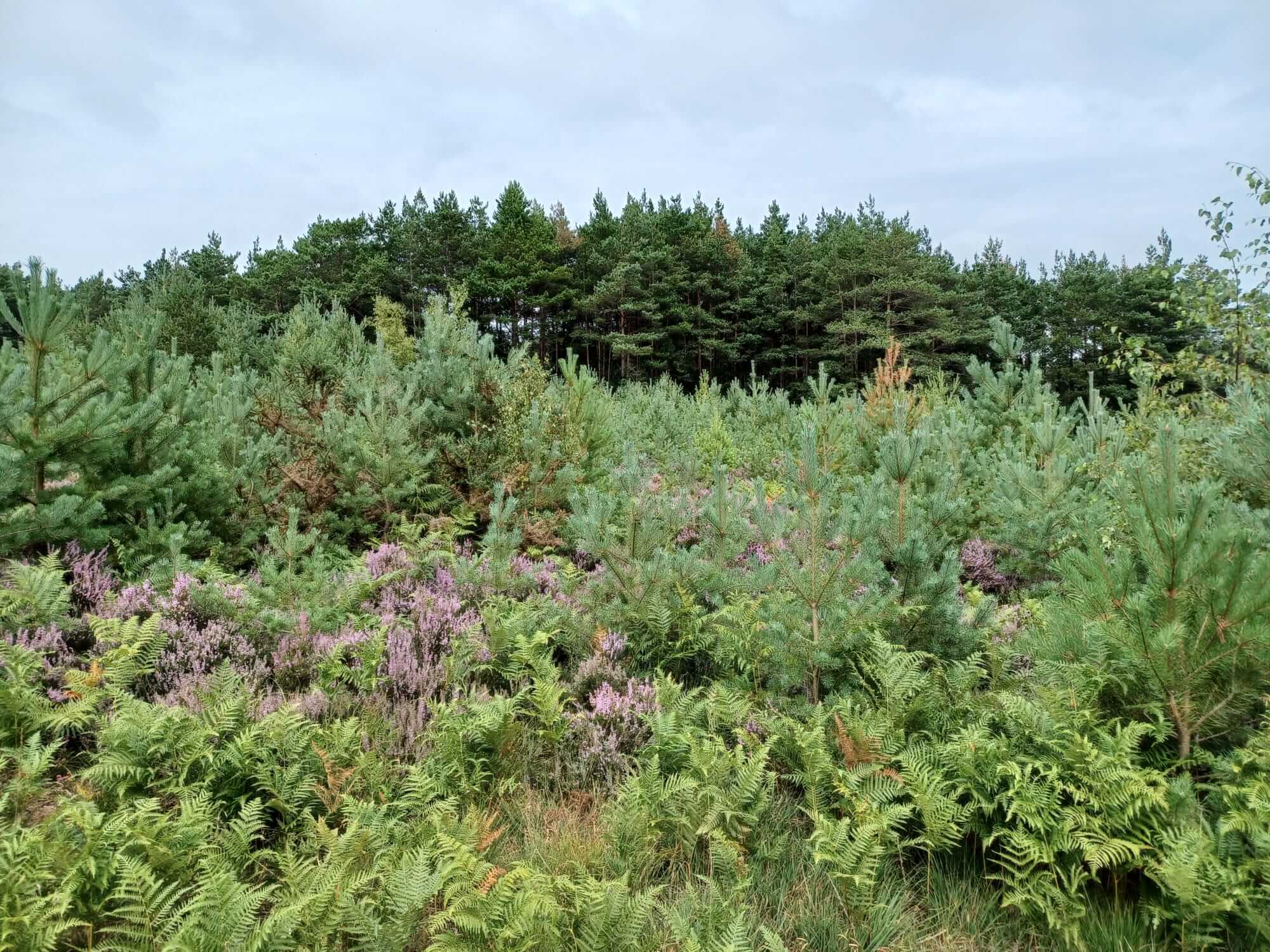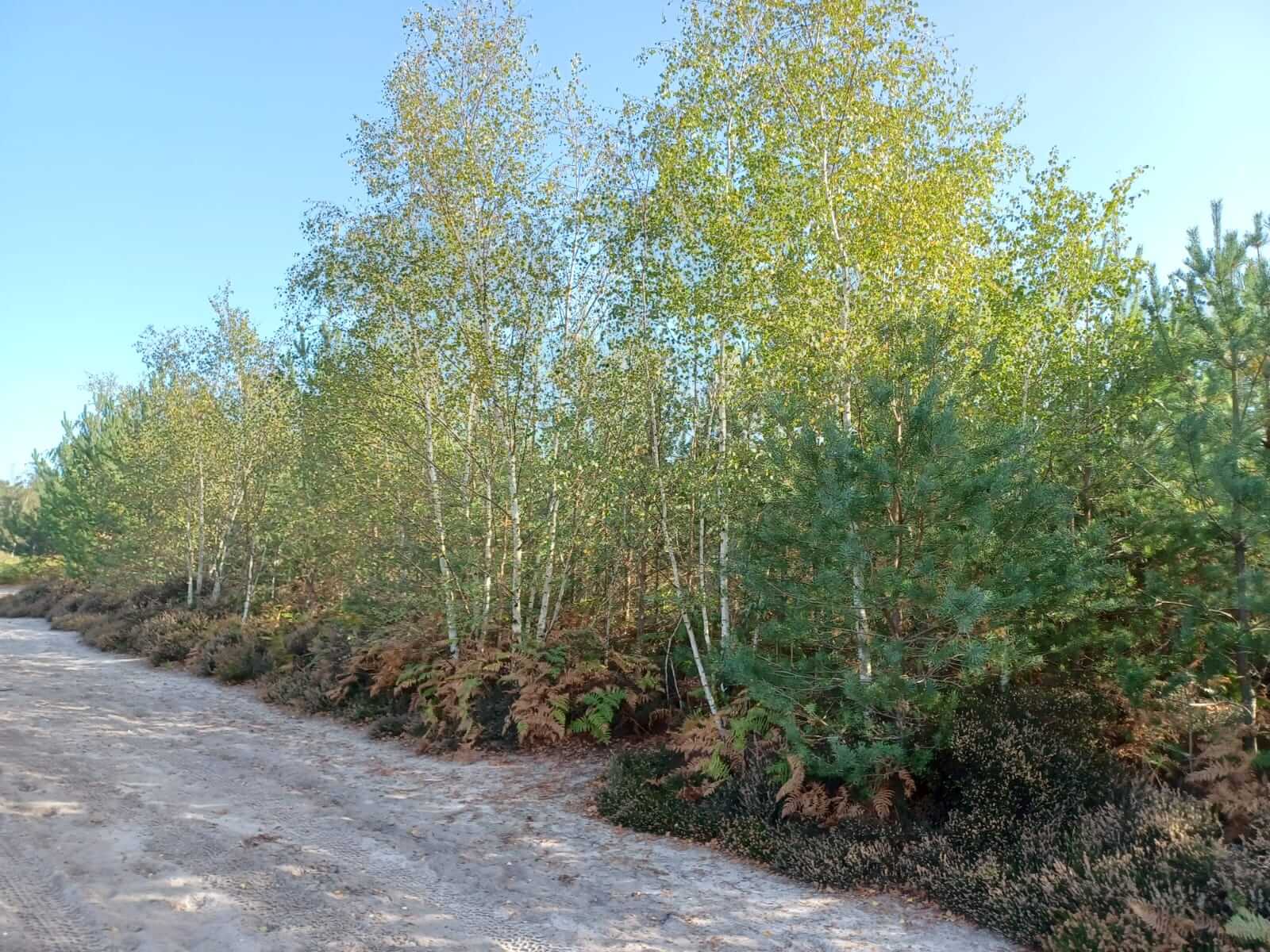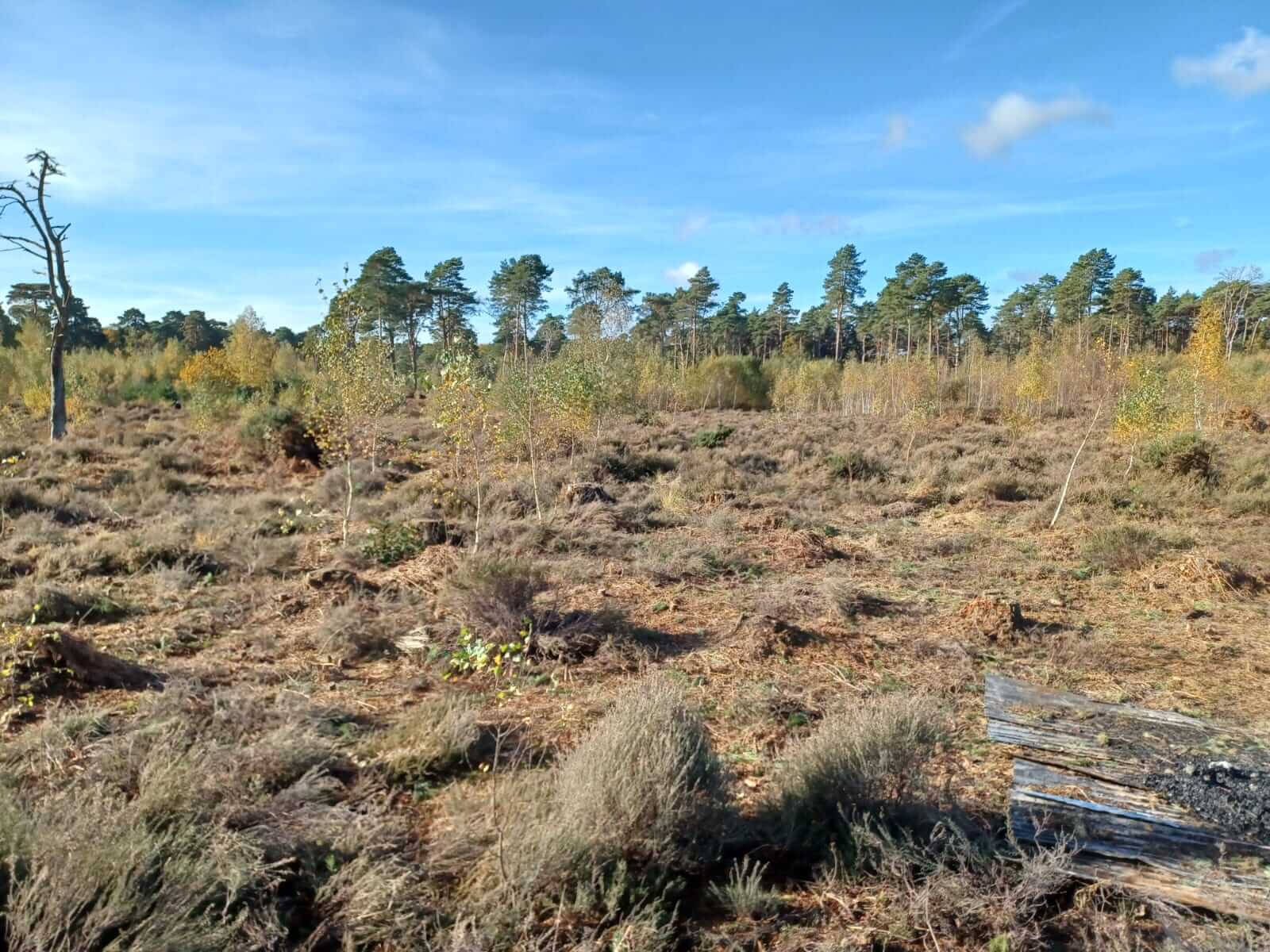esure Group have supported the planting of 6 hectares of wildflowers in the UK since 2023
esure Group is part of an imaginative and beautiful solution to the problem of the loss of flowers and pollinators in the UK. Not only are wildflowers attractive and beneficial to our well-being, but for the thousands of pollinating insects, wildflowers are critical.
Since 1940 we’ve lost ninety seven percent of our flower rich meadows and hundreds of our pollinator species are in decline. In areas, our local wildlife finds itself in isolated oases, walled in by agricultural land, urban landscapes, roads, and gardens.
Our solution is to restore B-Lines – a network of insect pathways along which we are restoring and creating wildflower rich habitat. These insect super highways created in partnership with GreenTheUK and Buglife will extend across the whole of the UK, allowing wildlife to move freely through our countryside and towns. Thanks to esure Group, we have created a network of flower-rich pathways benefitting pollinators, other wildlife and people.

Wildflower Restoration Site 1 in Staffordshire (0.4 hectares)
Cannock Chase plug planting at Ravenhill Park in Rugely, with Redbrook Hayes Community School and Brereton Million.
With the help of the reception class from Redbrook Hayes Community Primary School, some tidying of the site was carried out before planting some biodiverse wildflower plug plants. This work supports a wider project happening in the area with a local community group that has planted an edible garden in the park as well as enhancing the habitat within and around the woodland on site to benefit local species. Altogether, the land esure Group has helped to enhance makes up 0.4 hectares spread across Ravenhill Park.
Wildflower Restoration Site 2 in Cheshire (1 hectare)
Marbury Country Park lies in the heart of the Northwich Community Woodlands where what was once former industrial land is gradually being transformed to create a rich and green environment stretching from Northwich to Marbury. The woods sit within 350 hectares of parkland and are home to many endangered species such as Bitterns. esure Group sponsored the restoration and enhancement of local wildflower meadows with the planting of wildflower plugs across existing meadows.
Wildflower Restoration Site 3 in Shropshire (1.6 hectares)
esure Group has helped improve a post-industrial site, Langley Fields in Telford, for the threatened dingy skipper and other invertebrates. Post-industrial or brownfield sites have been subjected to frequent disturbance and tend to have low nutrient soils, giving rise to a wide variety of habitats at different stages of succession, termed open mosaic habitats. The differing succession stages can result in bare ground, heathland, woodland and grasslands and can support a variety of rare plant species, mosses, lichens and rich assemblages of invertebrates. Since the start of this year, esure Group has sponsored the clearing of overgrown scrub, thinning the woodland and creating areas of bare ground to produce a mosaic of habitats.
esure Group has sponsored the planting of Heather (Calluna vulgaris) and Bird’s Foot Trefoil (Lotus corniculatus) at Langley Fields. Bird’s foot trefoil is especially important for these sites as it is the larval food plant of the dingy skipper caterpillars. The dingy skipper is a rare butterfly that has experienced serious declines over recent years, mainly due to habitat loss, so it is hoped that the creation of a suitable habitat will kelp conserve this species.
Wildflower Restoration Site 4 in Surrey (1 hectare)
Chobham Common is the largest National Nature Reserve in the southeast of England, it stands as a magnificent exemplar of lowland heath—an ancient and distinctive British habitat shaped by prehistoric farmers. Over the course of more than 200 generations, rural communities have meticulously stewarded this expansive site, resulting in a mosaic of diverse mini-habitats.
Chobham Common stands out as one of the premier British sites for invertebrates including rare spiders, ladybirds, bees, butterflies and wasps. With over 300 species of wildflowers, swathes of purple heather and fragrant gorse dominating the landscape, this heathland provides bountiful floral resources for pollinators to feed on. Chobham is particular good for butterflies, with 33 butterfly species calling the site home; including rare heathland specialists such as the Silver-studded Blue and the Grayling. While 22 types of dragonflies dart above the heathland pools.
Unfortunately with climate change. Chobham has experienced substantial wildfires in recent years. esure Group's sponsorship has been directed towards the restoration of a hectare of heathland habitat at Chobham, by clearing invasive Scott's Pine trees. Helping to mitigate the impacts of these fires by providing new habitat for Chobham’s invertebrates, but also removing flammable material that could become a fuel source for future wildfires.
Wildflower Restoration Site 5 in Surrey (2 hectares)
esure Group's sponsorship has made possible the removal of invasive Scott’s Pine across two hectares of priority heathland habitat, at Surrey’s Ockham Common. With an alarming 85% decline in Surrey's heaths over the past two centuries, endeavours to restore and reconnect the remaining fragments are vitally important. Heathland habitats, known for their diversity, harbour a wide array of invertebrates and other species, including numerous specialists not found elsewhere. With heathlands particularly notable for their diversity in solitary bee species. Surrey, in particular, boasts more bee species than any other UK county, largely due to the quantity of heathland remaining in the county.
Ockham Common is a nationally significant site for invertebrates, constituting one of the best sites in the country for reed beetles. While the site is also a stronghold for struggling Glow Worms and Stag Beetles. The initial impression of the pine clearance work appears drastic, although the exposed patches of soil are being reclaimed by the growth of vibrant purple heather. Left unchecked invasive Scott’s Pine would outcompete Ockham’s flowering plant communities, depriving rare pollinators and other invertebrates of essential nectar food sources. The combined ground clearance and restoration of native wildflowers, local biodiversity will massively benefit from a huge boost in habitat.
Plug planting is a great way to add extra species to a site and give them a better chance of establishing. We often supplement seed scattering with additional plug plants to either add certain species that may not have been included in the seed mixes or bolster the site with specific species suited to the habitat. Plug plants often have a higher survival rate and prove more effective in the long run when trying to make sure certain species are present on a given site. They act similarly to when you plant potted plants in your garden or window box, providing an instant source of habitat, shelter, and food (when in flower) for local pollinating insects and other invertebrates. They also provide volunteers with a rewarding exercise so you are able to immediately see the impact of your planting on a site.
Wildflowers & Grasses Planted

UN's Sustainable Development Goals
As a GreenTheUK partner, you support projects that are in line with the UN Sustainable Development Goals.

Take urgent action to combat climate change and its impacts.

Sustainably manage forests, combat desertification, halt and reverse land degradation, halt biodiversity loss.




























































